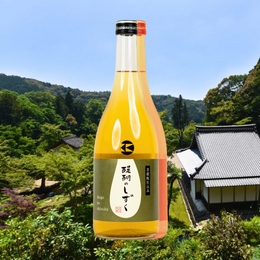
Among sake lovers, Hououbiden holds a special kind of prestige. It is not known for flash or ubiquity, but rather for reviving old brewing practices and still making sakes that are lush, expressive and modern-feeling.
Sitting along the historic road to the sacred Nikkō mountain range of Tochigi Prefecture is Kobayashi Shuzo where the sake is made, a family-owned sake brewery founded in 1872. This area was formerly known as Mitamura – literally “Beautiful Fields Village”, blessed with idyllic rice paddies and pure groundwater flowing from the nearby mountain range that provide ideal conditions for sake brewing.

The sake brand name “Hououbiden” (鳳凰美田) itself reflects this origin: “Biden” (美田) refers to the “beautiful rice fields” of its birthplace, while “Houou” (鳳凰) refers to the mythical phoenix. It’s unclear if the Hououbiden sake label was used from the very beginning, but it eventually became the flagship brand embodying the brewery’s identity just as the brewery needed to reinvent itself.

You see, by the late 1980s, Japan’s sake industry was in decline – younger consumers turned to beer and spirits, and many small breweries struggled. Kobayashi Shuzo experienced lean times by that period as later recounted by its owners. The fifth-generation Kobayashi heir, Masaki Kobayashi, returned to the family business in the 1990s with a vision. Prior to this, the brewery had produced fairly ordinary sake; like many traditional kura, it likely relied on bulk methods and possibly outsourced brewmasters.

Fifth-generation Kobayashi heir, Masaki Kobayashi, who leads the brewery with his wife today.
But 1995 marked a turning point: Masaki began implementing changes that raised eyebrows. He overhauled the brewery’s approach from the ground up, reconsidering every aspect of production. Quality and craft became the watchwords. The brewery shifted to brewing mostly Junmai (pure rice) sakes, especially Junmai Ginjo and Junmai Daiginjo grades, rather than more cheaply-made fortified styles that added alcohol. Instead of large tanks aimed at maximising output, production moved to smaller fermentation tanks allowing finer control, experimentation with different rice varieties and yeasts.

And perhaps most unusually, rather than hiring a veteran guild toji from outside, Masaki’s wife, Mayumi Kobayashi, stepped into the role of toji – a notable choice, as female master brewers are exceptionally rare in the old boys club of the sake industry at the time.
You could say that this renaissance earned its name: the concept of “Houou” (phoenix) took on new meaning as the brewery prepared for a rebirth, and became (re)conceived as an aspirational symbol of renewal.
Brewing Practices: Embracing Tradition and Craftsmanship
One of the most distinctive aspects of Kobayashi Shuzo is its commitment to traditional sake brewing techniques. Nearly every stage of production is done by hand or via time-honored methods.
This goes from making koji (cultured mold on rice) by hand, the time-intensive Fukurozuri” Drip Pressing method which relies on gravity to draw out delicate sake from the fermented mash, the laborious Kimoto Fermentation Method which relies on carefully introducing environmental lactic acid bacteria to develop naturally in the yeast mash, and a practice of aging their sake for 6 months to enrich its flavour.

Perhaps the rarest method in Kobayashi Shuzo’s arsenal is the way they steam their rice. While almost all modern sake breweries use industrial steamers for cooking rice, the brewery uses the Direct-Fire Steaming (直火蒸し) method, with a huge cauldron heated directly by fire to produce the steam for cooking rice. While this method of cooking rice requires create skill and attention, Mayumi believes that rice steamed with the “clean steam” of a directly stoked fire has a much purer quality, as direct steaming gelatinises the rice more gently and evenly, yielding steamed rice that absorbs koji and ferments more evenly to produce more flavourful sake.

The brewery also started emphasising its connection to their local land, working closely with local rice farmers to source for local rice and highlighting the use of the famously pure and mineral-rich water of the Nikko region of the prefecture as central to the sake’s character.
The best of new wave craft sake
Critics often mention that Hououbiden sakes exemplify the best of the new wave of craft sake: rich in aromatics, flavour and yet impeccably clean. And despite the artisanal nature of Hououbiden’s production, the results are consistently excellent – whether it’s a competition-level Daiginjo or a simple Junmai.
A wide array of sake exists under the Hououbiden brand. This ranges from flagship premium Junmai Daiginjos – the likes of the flagship “Hige-han” and lightly misty styled “Aka-han” – to single-origin Junmai Daiginjos made from near-extinct heirloom rice types (the Asahimai JDG) – to dry to sweet Junmai Ginjo styles that provide solid, food-friendly options.
Hououbiden Junmai Ginjo – Review

With that background out of the way, let’s have a look at one of the classic Junmai Ginjo offerings from Hououbiden.
This particular expression is made from a mixture of Gohyakumangoku rice (kake rice – meaning that it forms the bulk of the final mash – perhaps around 80% of it) and Yamadanishiki rice (koji rice – meaning that it is rice used to kick-start the saccharification process – typically forming 20% of the mash).
The rice is polished to 55% polishing ratio.
I had the chance to taste this Hououbiden Junmai Ginjo while reviewing the new SKLO Evolution glass – a new wine glass designed by Singaporean glassware retailer SKLO in collaboration with the Sommelier Association of Singapore.

Lee Ming (founder of SKLO) and Gerald (President of the SAS).
What stood out immediately about the glass is that it’s subtly adjusted to fit the physical characteristics of Asian drinkers – the bowl is proportioned to sit comfortably in smaller hands, and the slightly more compact opening works well for noses that are typically smaller and more sensitive to aromatics. There’s also a small button at the bottom of the glass that allows you to swirl the sake with ease, helping to lift the aromatics without feeling awkward. It’s a thoughtful, functional design, and it definitely helped in coaxing out the aromas from this sake.
Tasting Notes
Nose: Super expressive and distinctly fruity. Opens immediately a burst of ripe melons, bright bananas with cream coming forward vividly, accompanied by a subtle grassiness in the background. Despite the high aromatics, everything feels clean and clear, with a very polished and precise gingjoka style that’s vivid without being overbearing.
Palate: Presents a moderate fullness, carried by a softly syrupy texture that coats the mouth without feeling heavy. Opens with melon and banana again, balanced by a lively hit subtle youthful dryness – a kind of crisp, light karakuchi character. The flavours are rounded and expressive, melons and banana gently transition into clean earthy grainy rice notes. Toward the mid-palate, there’s a light hint of creamy vanilla and a soft cedar woodiness that adds some depth without overshadowing the fruit.
Finish: Quite delicate, with gentle floral notes drifting across. A clean, light dryness settles in, with a minor note of crisp Fuji apples. There’s also a very subtle lactic undertone – not quite milky, but a quiet creamy softness that rounds off the finish nicely right at the tail end.

My Thoughts:
This Hououbiden Junmai Ginjo is an exemplary representation of a well-crafted basic style—round, richly flavoured, yet remarkably clean and bright. Despite its lightness and cleanness, it’s also surprisingly expressive, with good layering and a well-rounded profile that makes it feel very complete. It’s flavourful enough that you can easily enjoy it on its own without having to hunt for flavours, yet it’s clear and dry enough to pair effortlessly with a wide range of foods.
As a basic style, this Hououbiden Junmai Ginjo is done extremely well – nothing flashy, just really solid brewing that lets the rice and mineral water speak clearly.
I highly recommend using a wine glass like the SKLO Evolution for this style of sake; it really brings out the full aromatic and textural range in a very natural way.

@CharsiuCharlie







